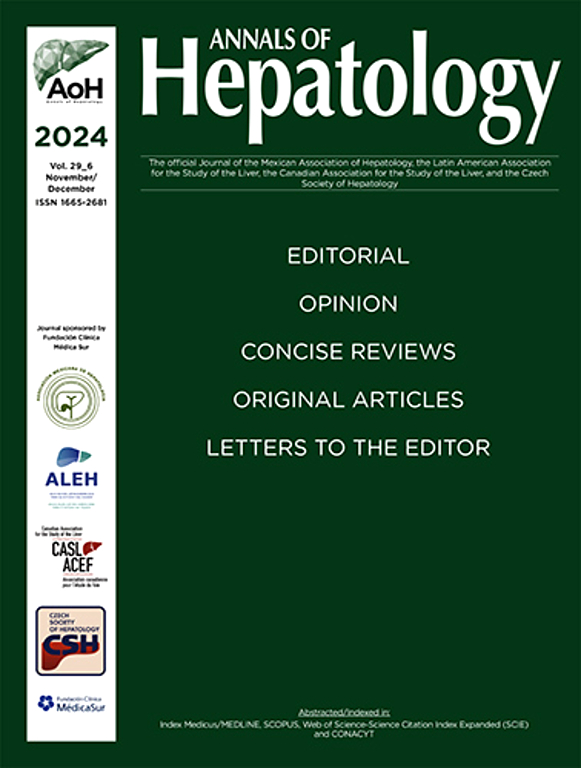一项关于代谢功能障碍相关脂肪变性肝病患者经历的社交媒体聆听研究:LISTEN-MASLD研究
IF 3.7
3区 医学
Q2 GASTROENTEROLOGY & HEPATOLOGY
引用次数: 0
摘要
前言和目标:患者越来越多地使用社交媒体来分享和获取与健康相关的信息和经验。本研究采用社交媒体聆听来获得以患者为中心的代谢功能障碍相关脂肪性肝病(MASLD),以前称为非酒精性脂肪性肝病(NAFLD)。材料和方法:收集2020年11月4日至2022年11月4日期间来自巴西、中国、法国、德国、日本、韩国、西班牙和英国8个国家关于NAFLD的公开社交媒体数据。分析包括从各种社交媒体平台捕获患者在其旅程阶段的对话(原因-风险因素,症状,诊断和治疗),未满足的需求以及对患者生活质量(QoL)的影响,以获得与NAFLD相关的见解。结果:共分析了1600个以患者为中心的岗位。患者旅程是提及最多的话题(92%),其次是合并症(38%)和与医护人员的互动(26%,卫生保健专业人员)。讨论的主要原因包括不健康的饮食(39%)和超重/肥胖(32%),而提到最多的症状是疲劳(20%)和疼痛或腹部不适(20%)。超声(n=170/553, 31%)是最常用的诊断方法,其次是血液检查(n=130/553, 24%)和肝功能检查(n=91/553, 16%)。生活方式管理技术是主要的标准护理,其次是治疗(n=270/1061, 25%)和HCPs随访(n=133/1061, 13%)。超过一半(54%)的生活质量讨论(n=104/192)关注患者的合并症,27%关注疾病严重程度,表明中度至重度NAFLD合并合并症显著影响患者的生活质量。一项情绪分析显示,患者对自己的病情感到担忧和沮丧,但也抱有希望,并决心改善自己的健康。近38%的帖子提到,患者在情绪上受到负面情绪的影响,尤其是那些患有多种合并症的患者。缺乏知识渊博的医务人员和治疗方案是最常被讨论的未满足需求。结论:对MASLD患者体验的分析为深入了解患者体验及其对生活质量的影响提供了一种独特的方法。这些见解有可能补充传统方法并促进以患者为中心的研究。本文章由计算机程序翻译,如有差异,请以英文原文为准。
A social media listening study of patients’ experiences relating to metabolic dysfunction-associated steatotic liver disease: The LISTEN-MASLD study
Introduction and Objectives
Patients increasingly use social media to share and access health-related information and experiences. This study employed social media listening to gain patient-centric insights into metabolic dysfunction-associated steatotic liver disease (MASLD), formerly known as non-alcoholic fatty liver disease (NAFLD).
Materials and Method
Publicly available social media data was collected between November 4th, 2020, and November 4th, 2022, about MASLD from eight countries: Brazil, China, France, Germany, Japan, South Korea, Spain, and the United Kingdom. The analysis involved capturing patient conversations on their journey stages (causes-risk factors, symptoms, diagnosis, and treatment), unmet needs, and impact on patient's quality of life (QoL) from various social media platforms to gain insights associated with MASLD.
Results
A total of 1600 patient-centric posts were analyzed. The patient journey was the most prevalent topic (92 %) mentioned, followed by comorbidities (38 %) and interactions with HCPs (26 %, health care professionals). Key causes discussed included unhealthy diet (39 %) and overweight/obese (32 %), while the most mentioned symptoms were fatigue (20 %) and pain or abdominal discomfort (20 %). Ultrasound (n=170/553, 31 %) was the most used diagnosis, followed by blood tests (n=130/553, 24 %) and liver function tests (n=91/553, 16 %). Lifestyle management techniques were mainly the standard of care, followed by treatment (n=270/1061, 25 %) and follow-ups with HCPs (n=133/1061, 13 %). Over half (54 %) of the QoL discussion (n=104/192) focused on patients’ comorbidities, and 27 % on disease severity, indicating that having MASLD in moderate to severe form with comorbidities significantly affects patients’ quality of life. An emotional analysis revealed that patients were worried and frustrated about their condition but were also hopeful and determined to improve their health. Nearly 38 % of the posts mentioned that patients were emotionally affected by negative feelings, especially those with multiple comorbidities. Lack of access to knowledgeable HCPs and treatment options were the most frequently discussed unmet needs.
Conclusions
This analysis of NAFLD patient experiences introduces a unique approach for deriving insights into patients' experiences and their impact on QoL. These insights have the potential to complement conventional methods and foster patient-centric research.
求助全文
通过发布文献求助,成功后即可免费获取论文全文。
去求助
来源期刊

Annals of hepatology
医学-胃肠肝病学
CiteScore
7.90
自引率
2.60%
发文量
183
审稿时长
4-8 weeks
期刊介绍:
Annals of Hepatology publishes original research on the biology and diseases of the liver in both humans and experimental models. Contributions may be submitted as regular articles. The journal also publishes concise reviews of both basic and clinical topics.
 求助内容:
求助内容: 应助结果提醒方式:
应助结果提醒方式:


